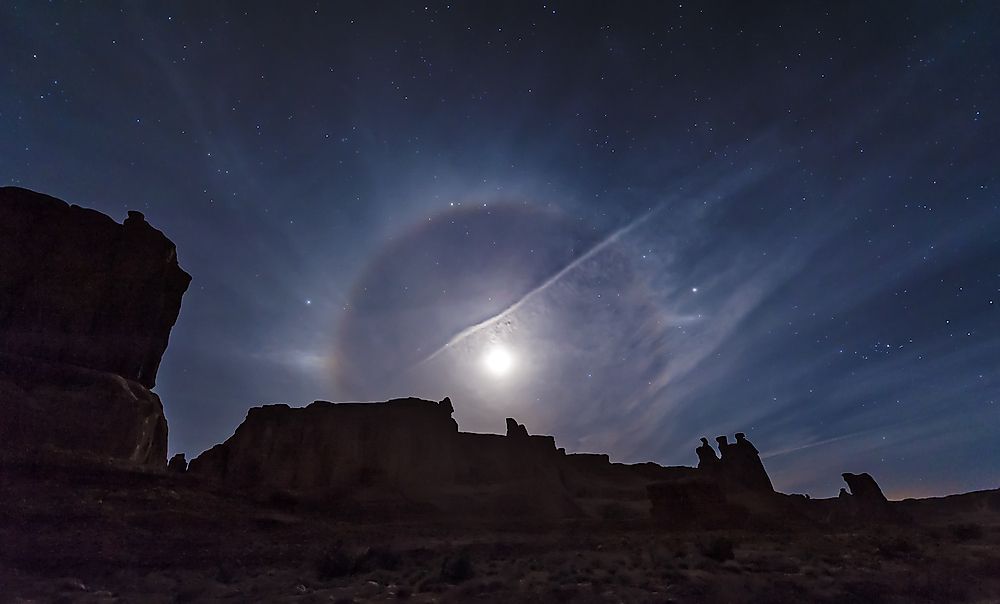What Is A Moon Halo?

When light from the sun or moon interacts with matter such as atmosphere, cloud, water, and other particulates, an optical phenomenon is formed. Examples of optical phenomenon include rainbows, green rays, Fata Morganas, alpenglow, anthelions, and halos among others. Halo is produced when light from either the sun or moon interacts with ice crystal suspended in the atmosphere. The ice crystals responsible for the formation of halos are always suspended in cirrus in the upper troposphere. Halos range from colored to arcs and spots in the sky near the sun or the moon. Some of the popular halos are the circular halo (22 degree halo), sun dog, and light pillars.
Moon Halos
When conditions are right, the moon produces some fascinating optical effects. Some of the most popular effects are the moon halo, moon pillars, moon dogs, and moon bows. A moon halo, sometimes referred to as moon ring, is a ring formed around the moon with the radius of approximately 22°. It is formed when the moonlight is refracted in ice crystals suspended in the atmosphere. The shapes of the ice crystals lead to focusing the light into a ring and since the crystals have hexagonal shapes, the moon halo is also almost the same size. Moon halo is relatively large with the radius almost the size of an outstretched hand. The halo can be visible for 100 days in a year.
Formation of Halos
Although both the moon and sun halos are the most common types of halo, the exact shape of the ice crystal responsible for their formation is still not clear. Hexagonal shapes are often put forward as the most likely shape. The ice crystals are contained in the tiny cirrus clouds hanging 20,000 feet high or more. The crystals behave like jewels that refract and reflect light from all direction. As light passes through the hexagonal-shaped ice crystal in the high atmosphere, the ice crystal refracts or bends light in the same way that camera lens bend light. The radius of the ring is 22° and sometimes a ring of 46° in radius may be formed. However, ring around the moon or sun can be as a result of a phenomenon known as corona and is often confused with moon halo. Unlike halos, the corona is produced with water droplets and not ice crystals.
Moon Halo Weather Folklore
Moon halos are often associated with storms or bad weather and in many cases, it turns out to be true. So, how can a ring around the moon be a weather predictor? The ice crystals covering the halo are high altitude indicators. The thin cirrus clouds often come one of two days before a large storm. It is also believed that the number of stars around the moon ring indicate the number of days before the storm arrives. However, cirrus clouds can also occur without any weather change. Therefore, moon halo is not a reliable sign of bad weather as much as the weather turns out to be bad most of the time the moon ring appears.











